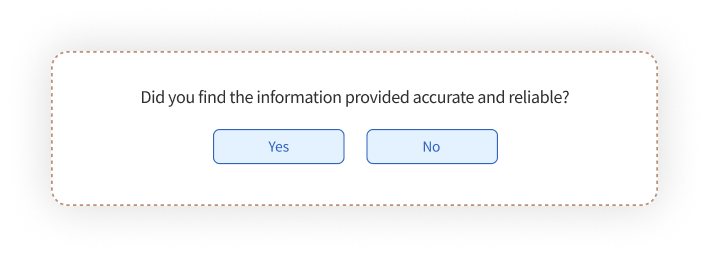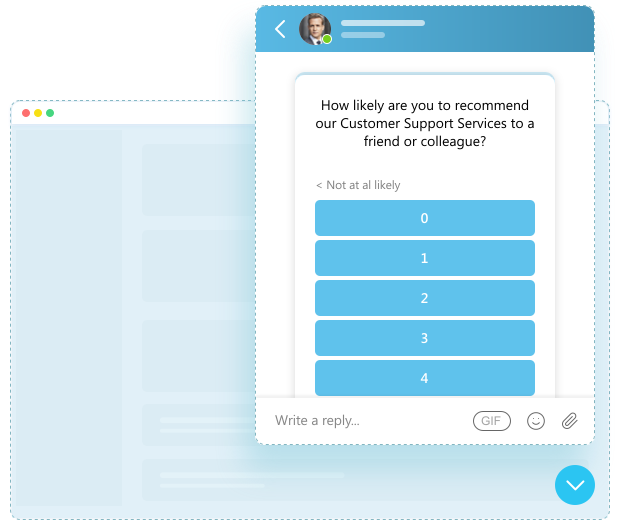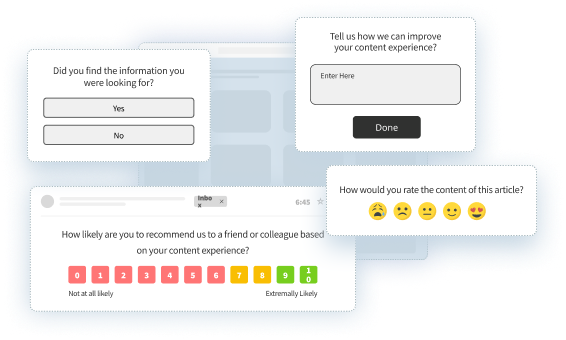Imagine this: Apple launches the iPhone 16, and instead of the usual buzz of excitement, the support lines are jammed. Users are frustrated, struggling with a new camera feature that isn’t as intuitive as they hoped. Social media erupts with complaints, and Apple’s reputation takes a hit. All this could have been avoided with a well-prepared knowledge base, refined through user feedback.
This scenario highlights the critical role of help and knowledge base feedback. In a world where customer expectations are sky-high, ensuring your knowledge base is up to the task isn’t just important—it’s essential. A well-maintained knowledge base not only reduces the strain on support teams but also empowers customers to find solutions quickly, improving their overall experience. By continually gathering and acting on feedback, companies can ensure their resources evolve with user needs, transforming potential frustrations into seamless interactions.
In this article, we will explore the different types of help and knowledge base feedback, key metrics to track, and effective methods to collect and act on this feedback. So, without any further ado, let's get started!
TL;DR
- Help and knowledge base feedback offer the insights and opinions users provide about your knowledge base, helping you improve its content, usability, and effectiveness.
- By collecting help and knowledge base feedback, you can ensure that your knowledge base will evolve with user needs, reduce support costs, and enhance overall customer satisfaction.
- Content feedback, usability feedback, multimedia content feedback, and performance feedback are some of the types of help and knowledge base feedback.
- Customer Effort Score (CES), Customer Satisfaction Score (CSAT), first contact resolution rate, and search success rate are some key metrics to track to enhance help and knowledge base.
- Embedded feedback widgets, in-app feedback, live chat feedback, post-interaction surveys, and support tickets are some of the methods to collect help and knowledge base feedback.
- Zonka Feedback is a customer experience software that seamlessly collects and analyzes help and knowledge base feedback. With features like feedback widgets, in-app surveys, AI-driven sentiment analysis, and more, it helps you capture real-time insights to continuously improve your knowledge base. Sign up for a free trial or schedule a demo to explore its capabilities.
Improve CX with Help & Knowledge Base Feedback
Create targeted surveys, measure customer satisfaction, and drive continuous improvement with Zonka Feedback.

What is Help and Knowledge Base Feedback?
Imagine your company has just launched a new software product. Users flood your knowledge base, looking for guidance on setup and troubleshooting. Feedback from these interactions might highlight areas where the instructions are unclear or suggest new topics that users are struggling to find. For instance, a customer might leave a comment like, "The article on API integration is too technical. Can you include step-by-step instructions?"
This type of feedback is invaluable. It tells you where your content is succeeding and where it’s falling short. Another example could be feedback on the search functionality of your knowledge base—users might report that finding relevant articles is challenging, indicating a need for better categorization or search optimization.
Just as information is the oil of the 21st century, a well-maintained knowledge base is the engine that drives customer satisfaction
At its core, help and knowledge base feedback are the collective insights, opinions, and experiences that users share regarding your organization's self-service resources. It’s the pulse check on how effectively your help articles, FAQs, and other knowledge base content serve their purpose: to empower users to resolve issues independently and efficiently.
Why is it Important?
Let us look at some reasons why you must consider including help and knowledge base feedback.
- Reducing Support Ticket Volume: A well-maintained knowledge base is a powerful tool for deflecting unnecessary support tickets. When users can find what they need quickly, they’re less likely to escalate the issue to your support team. Help and knowledge base feedback plays a critical role here—it helps identify common pain points and information gaps that, if addressed, can preemptively resolve user issues. This proactive approach not only reduces the burden on your support teams but also lowers operational costs.
- Improving Search Functionality: Search functionality is the backbone of any effective knowledge base. If users can’t find what they’re looking for, the entire system fails. Feedback on search performance—such as complaints about irrelevant results or difficulties in navigating search filters—can guide improvements that make it easier for users to access the right information. Think of it as fine-tuning the engine that powers your knowledge base. For enterprises, this can mean the difference between a frustrated customer and a satisfied one.
- Ensuring Accessibility for All Users: In a world where inclusivity is paramount, ensuring your knowledge base is accessible to users with disabilities is not just a regulatory requirement but a moral imperative. Feedback from users with disabilities is crucial for identifying barriers that might not be immediately obvious. For instance, a visually impaired user might struggle with a lack of screen reader support or poorly described images. By collecting and acting on this feedback, enterprises can ensure their knowledge base meets standards like WCAG (Web Content Accessibility Guidelines), making it a truly inclusive resource.
- Addressing Content Gaps and Improvement Areas: No knowledge base is perfect from the start. It’s a living resource that must evolve alongside your products and customer needs. Feedback highlights content gaps—topics that users are searching for but can’t find. For example, if multiple users are requesting information on a specific feature that isn’t covered in your existing articles, it’s a clear signal that new content is needed. Addressing these gaps not only improves the knowledge base but also demonstrates to your customers that you’re attentive to their needs.
- Enabling Dynamic Content Updates: Feedback-driven knowledge bases are dynamic, not static. They evolve continuously based on real-time input from users. Companies that implement a system for regular content updates, driven by user feedback, are better positioned to keep their resources relevant and accurate. This adaptability is crucial in a fast-moving business environment where outdated information can quickly lead to customer dissatisfaction.

Types of Help and Knowledge Base Feedback
Collecting help and knowledge base feedback isn't a one-size-fits-all process. Different types of feedback provide unique insights into various aspects of your knowledge base, each offering opportunities for improvement. Let’s dive into the key types of feedback you should focus on and why they are essential for maintaining an effective and user-friendly knowledge base.
1. Content Feedback
Content feedback refers to the insights users provide about the relevance, accuracy, and clarity of the information in your knowledge base. You can use content experience surveys to understand whether the content you’ve provided is meeting users’ needs and if it’s presented in a way that’s easy to understand.
Here are some reasons why collecting content feedback for your help and knowledge base articles is important.
- Ensures Information Accuracy: Keeping your content accurate is crucial, especially in industries where incorrect information could lead to costly errors. For example, if a financial services company receives feedback that their tax filing guide contains outdated information, updating it promptly ensures users are making informed decisions.
- Enhances Content Relevance: Users’ needs evolve, and so should your content. Feedback helps you identify if certain articles or sections are no longer relevant or if new topics need to be added. For instance, a software company might discover through feedback that users are seeking guidance on a newly released feature that’s not yet covered in the knowledge base.
- Improves Clarity and Understanding: Feedback on content clarity helps you identify areas where users may be confused or misinterpret the information. This is particularly important for technical products, where complex instructions could overwhelm users. Simplifying language and adding step-by-step visuals can make the content more accessible.

2. Usability Feedback
Like website usability surveys focuses on the user experience of navigating and interacting with your website, similarly usability feedback for help and knowledge base understands the user experience with your support content, ease of finding relevant information, and the overall effectiveness of your help resources in resolving issues. This includes insights into how easy it is to find information, the effectiveness of the search functionality, and the overall design and layout.
Consider these reasons to collect usability feedback for your help and knowledge base articles:
- Optimizes Navigation: If users struggle to find the information they need, they’re likely to become frustrated and abandon the knowledge base altogether. Feedback on navigation can highlight if your categories are confusing or if the structure needs reorganization. For example, a large retail company might receive feedback that their product manuals are buried too deep within the site, prompting a redesign to bring them to the forefront.
- Enhances Search Functionality: A well-functioning search feature is essential for any knowledge base. Feedback can reveal if users are getting irrelevant results or if search filters are too broad or narrow. Improving these aspects ensures users can quickly find what they’re looking for, reducing the need for additional support.
- Improves Overall User Experience: Usability feedback might point out issues such as slow page load times, confusing layouts, or non-intuitive design elements. By addressing these issues, you can create a smoother and more enjoyable experience for your users, encouraging them to rely on the knowledge base as their primary resource.

3. Information Effectiveness Feedback
Effectiveness feedback assesses whether users are actually able to solve their problems using the information provided in your knowledge base. This type of feedback focuses on the practical outcomes of the content—whether users find the answers they need and if those answers help them resolve their issues.
Here's why collecting information effectiveness feedback matters for your knowledge base:
- Measures Success in Problem Resolution: Feedback on effectiveness helps you understand if your knowledge base is truly helping users solve their problems. For instance, if a SaaS provider finds that users are still contacting support after reading a troubleshooting guide, it’s a clear sign that the guide isn’t meeting its goal and needs revision.
- Highlights Areas for Improvement: Effectiveness feedback can reveal specific areas where the knowledge base is falling short, such as overly technical language or missing steps in a process. Addressing these gaps can lead to higher self-service rates and lower support costs.
- Builds Trust in Self-Service Options: When users consistently find the answers they need, they develop trust in your knowledge base as a reliable resource. This trust reduces their dependence on direct support, leading to a more efficient and satisfying customer experience.

4. Gaps and Improvement Suggestions
Gaps and improvement suggestions are feedback that identifies missing topics, incomplete information, or areas where the knowledge base could be expanded or improved. This type of feedback often comes directly from users who encounter issues that aren’t adequately covered.
Consider these reasons for collecting improvement suggestions for your help and knowledge base:
- Identifies Content Gaps: Users are the best source for identifying what’s missing from your knowledge base. For example, if multiple users request information on a specific use case that’s not covered, it’s a clear signal that you need to create new content to fill that gap.
- Drives Continuous Improvement: Feedback on potential improvements ensures that your knowledge base evolves alongside your products and user needs. A tech company might receive suggestions for adding more multimedia content, like videos or interactive diagrams, to help users better understand complex features.
- Keeps Content Relevant and Up-to-Date: Suggestions from users can also highlight outdated or less useful content that needs to be refreshed or removed. This ensures your knowledge base remains a valuable and up-to-date resource that users can depend on.

5. Performance Feedback
Performance Feedback relates to the technical performance of the knowledge base, including page load times, responsiveness, and overall speed. This type of feedback helps you identify and address technical issues that may be affecting user experience.
Here's why collecting performance feedback matters for your knowledge base:
- Ensures Fast Access to Information: Users expect quick access to information. Feedback on slow load times or unresponsive pages can help you optimize the technical performance of the knowledge base, ensuring users don’t get frustrated and abandon their search.
- Improves Mobile Experience: In today’s mobile-first world, ensuring that your knowledge base performs well on all devices is crucial. Performance feedback can highlight issues with mobile responsiveness, guiding you to make necessary improvements for mobile users.
- Reduces Bounce Rates: Technical issues can lead to higher bounce rates, where users leave the knowledge base without finding what they need. Addressing performance feedback can help reduce bounce rates and keep users engaged with your content.

6. Feedback on Multimedia Content
Feedback on Multimedia Content covers user responses to videos, images, infographics, and other non-text elements within the knowledge base. This type of feedback helps you understand the effectiveness of these elements in conveying information.
Consider these reasons for collecting improvement suggestions for your help and knowledge base:
- Enhances Learning and Engagement: Multimedia content can make complex information easier to understand and more engaging. Feedback might indicate whether users find instructional videos helpful or if they prefer step-by-step images over text descriptions.
- Identifies Preferred Content Formats: Users have different learning preferences. Some might favor videos, while others prefer written guides or infographics. Feedback can guide you in offering a variety of content formats to meet diverse user needs.
- Supports Accessibility: Multimedia feedback can also highlight accessibility issues, such as videos lacking captions or images without alt text. Addressing this feedback ensures that all users, including those with disabilities, can benefit from your multimedia content.

7. Overall Satisfaction Feedback
Satisfaction Feedback is a direct measure of how satisfied users are with the knowledge base as a whole. You can collect this feedback after users interact with the knowledge base. Here's why collecting overall satisfaction feedback matters for your help and knowledge base:
- Measures Overall Effectiveness: Satisfaction feedback provides a broad indicator of how well the knowledge base is meeting user needs. For example, a high satisfaction score suggests that users are finding the knowledge base useful, while lower scores might indicate areas for improvement.
- Guides Strategic Improvements: By analyzing satisfaction feedback, you can prioritize which areas of the knowledge base need the most attention. For instance, if satisfaction scores are low due to outdated content, this feedback can guide a strategic content overhaul.
- Builds User Loyalty: High satisfaction with the knowledge base can contribute to overall customer loyalty thereby increasing the Net Promoter Score. When users consistently find value in the knowledge base, they are more likely to return and rely on it for future issues, reducing churn and enhancing long-term engagement.

Key Metrics to Track for Help and Knowledge Base Feedback
Tracking the right metrics is crucial for understanding how well your help and knowledge base resources are performing. These metrics provide a window into the user experience, revealing what’s working and where there’s room for improvement.
Let’s dive into the essential metrics you should be monitoring to ensure your knowledge base is driving both customer satisfaction and operational efficiency.
a. Customer Effort Score (CES)
The Customer Effort Score (CES) measures how easy it is for users to find answers and solve their problems using your knowledge base. It’s a direct reflection of the user experience. Imagine an enterprise SaaS company noticing a spike in CES after launching a new feature. Users report that the relevant documentation is hard to find and confusing. By refining the content and making it more accessible, they bring the CES down, improving overall user satisfaction.
Measuring this key metric would help you to:
- Reduce Friction: A low effort score indicates that users can easily navigate your knowledge base, reducing the need for additional support. If your CES is high, it may suggest that users are struggling to find relevant information, prompting you to streamline content or improve search functionality.
- Predict Customer Loyalty: Research has shown that customers who find it easy to resolve their issues are more likely to remain loyal to a brand. Tracking CES can help you identify areas where the knowledge base could be optimized to enhance customer retention.
b. Customer Satisfaction Score (CSAT)
CSAT measures users' satisfaction with the content and overall experience of using your knowledge base. It’s typically captured through surveys immediately after users interact with an article or solve a problem.
For instance, a global e-commerce platform when noticed that its CSAT score dipped after a major update to its return policy, the reason was that the new policy explanation was too complex. By simplifying the language and adding a visual guide, they saw their CSAT score recover, with users reporting a better understanding of the process.
CSAT score gives you a clear picture with:
- Direct Feedback on Content Quality: A high CSAT score indicates that users find the content helpful and easy to understand. If your score is lower than expected, it might be time to review your content for clarity and completeness.
- Benchmark for Success: CSAT provides a benchmark for the effectiveness of your knowledge base. Comparing scores over time helps by using CSAT surveys, you track improvements and understand how changes to the knowledge base impact user satisfaction.
c. Time to Resolution
Time to resolution measures how quickly users can find the answers they need and solve their issues using the knowledge base. It’s a critical metric for assessing the efficiency of your support resources. It helps you to:
- Enhances User Experience: The faster users can resolve their issues, the better their overall experience. Long resolution times often indicate that the content is too complex or difficult to find, highlighting areas for improvement.
- Reduces Support Costs: Faster resolution through the knowledge base means fewer users will escalate their issues to live support, reducing the overall cost of customer service.
d. First Contact Resolution Rate
First Contact Resolution (FCR) Rate measures the percentage of issues that users can resolve on their first visit to the knowledge base, without needing further assistance.
For example, consider a telecom company tracking FCR that noticed that users frequently revisited the knowledge base for the same issue related to modem setup. After revising the article with clearer instructions and troubleshooting tips, the FCR rate improved significantly, reducing repeat visits and support calls.
By monitoring FCR, you can:
- Increases Efficiency: A high FCR rate indicates that your knowledge base is effective at solving problems on the first try, reducing the need for follow-up interactions.
- Boosts Customer Satisfaction: Resolving issues on the first attempt leads to a better user experience, driving higher satisfaction and loyalty.
e. Click-Through Rate (CTR) of Articles
CTR measures how often users click on links within your knowledge base, such as related articles or external resources. It’s a key indicator of how engaging and useful your content is. Measuring CTR of articles is important as it helps to:
- Indicate Engagement: A high CTR suggests that users are actively engaging with the content and exploring related topics, which can lead to better problem resolution.
- Identifies Content Gaps: If users aren’t clicking through to related articles, it could indicate that the content isn’t sufficiently linked or that users aren’t finding the additional information relevant.
f. Search Success Rate
Search Success Rate tracks how often users find what they’re looking for using the knowledge base’s search function. It’s a critical metric for understanding the effectiveness of your search functionality.
To understand this, consider an enterprise software company that noticed a drop in search success rate after introducing a new product line. Users were struggling to find relevant articles because the search terms hadn’t been updated to include the new terminology. By adjusting the search algorithm and updating keywords, the search success rate improved, making it easier for users to find the information they needed.
Here's why you must consider this key metric for help and knowledge base feedback:
- Improves User Experience: A high search success rate indicates that your search function is effective and users are easily finding the information they need. A low rate suggests that search results do not match user expectations, leading to frustration.
- Guides Search Optimization: Tracking this metric helps you fine-tune your search algorithms and improve the relevancy of search results, ensuring users can quickly access the right information.
- Reduces Support Tickets: When users successfully find what they’re looking for through search, they’re less likely to escalate their issues to customer support. Improving search success rate can directly correlate to a reduction in support ticket volume, which in turn lowers operational costs and improves support efficiency.
Examples of Companies Using Help and Knowledge Base Feedback
Incorporating help and knowledge base feedback into their strategies has allowed many companies across various industries to enhance customer satisfaction and streamline their support processes. Let’s look at the top three examples from different sectors along with the strategies that have helped them to enhance customer experience with their help and knowledge base feedback.
1. Microsoft
Microsoft leverages help and knowledge base feedback extensively to ensure their vast range of products, from Windows OS to Office 365, meet customer needs effectively. They collect customer feedback directly from users who interact with their knowledge base articles, allowing them to identify common issues and areas for improvement.
Their Strategy?
- Data-Driven Content Updates: Microsoft continuously monitors which knowledge base articles receive the most views and user interactions. They prioritize updates to these high-traffic articles, ensuring that the most used resources are always accurate and up-to-date.
- User Feedback Integration: Microsoft has integrated feedback forms directly into their knowledge base, asking users to rate the helpfulness of each article and provide specific comments. This real-time feedback is crucial for identifying content gaps or areas where instructions might be unclear.
- Regular Content Audits: The company conducts regular audits of their knowledge base, using feedback data to determine which articles need to be revised, merged, or removed. This helps keep their knowledge base streamlined and efficient.
What We Can Learn?
Microsoft’s success lies in their proactive approach to content management. By continuously refining their knowledge base based on user feedback, they ensure that customers can find accurate and helpful information quickly, reducing frustration and increasing satisfaction.
2. Amazon
Amazon, the world’s largest online retailer, relies heavily on its knowledge base to support millions of customers and sellers globally. Feedback from these users is critical in maintaining an effective support system that can scale with their growing business.
Their Strategy?
- Personalized Help Content: Amazon uses feedback to personalize help content for different types of users—buyers, sellers, and developers. For instance, they track which articles are most useful to sellers and continuously update these to address new issues as they arise.
- Real-Time Feedback Mechanisms: Amazon incorporates real-time feedback options within their knowledge base, allowing users to indicate whether an article solved their issue. Negative feedback triggers an internal review process where content teams work to improve the article.
- Customer Journey Mapping: Feedback is also used to map out customer journeys and identify points where users are most likely to seek help. Amazon uses this data to preemptively create and optimize content for these critical touchpoints, reducing the need for customer support interactions.
What We Can Learn?
Amazon’s ability to personalize and update their knowledge base in real-time demonstrates the power of integrating user feedback into the content lifecycle. Their approach ensures that users have access to the most relevant and up-to-date information, enhancing their overall shopping experience.
3. American Express
American Express places a strong emphasis on customer satisfaction, leveraging help and knowledge base feedback to continually enhance their support resources. Their approach is centered on providing clear, relevant, and timely information to cardholders and business clients.
Their Strategy?
- Continuous Content Optimization: American Express regularly collects feedback from users who interact with their online help center. This feedback is used to optimize content for clarity and relevance, particularly for complex topics like rewards programs, fraud protection, and billing disputes.
- Customer-Centric Content Creation: Feedback from cardholders is analyzed to identify common pain points, such as understanding billing statements or maximizing reward points. American Express then creates targeted articles and FAQs that directly address these concerns, making it easier for customers to find answers without needing to contact support.
- Proactive Communication: In response to feedback, American Express proactively updates their knowledge base with information about new products, services, or policy changes. For example, during the rollout of a new rewards program, they used feedback to refine explanations and ensure that customers understood how to maximize their benefits.
What We Can Learn?
American Express’s success underscores the importance of continuous feedback integration and proactive content management. By focusing on customer-centric content creation and regularly updating their knowledge base based on user input, they enhance the overall customer experience and reduce the need for direct support.
Methods for Collecting Help and Knowledge Base Feedback
Effectively collecting feedback from your users is essential to maintaining and improving your knowledge base. Each method of collecting feedback has its strengths, and by using a combination of these techniques, you can gain a comprehensive understanding of how your users interact with your knowledge base and where improvements are needed.
Let’s explore some of the most effective methods for collecting Help and Knowledge Base Feedback.
1. Embedded Feedback Widgets
Embedded feedback widgets are interactive elements placed directly on your knowledge base articles, allowing users to provide immediate feedback on the content they’re reading. These feedback widgets can take various forms, such as emoji surveys, simple thumbs-up/thumbs-down buttons, star ratings, or more detailed surveys embedded within the article itself.
For implementing feedback widgets, you can leverage:
- Customize Survey Question: Customize the survey questions to align with specific goals, such as improving content clarity or gathering suggestions for additional topics. Ensure that the survey is context-aware—asking relevant questions based on the user’s interaction with the specific article.
- Custom-Built Feedback Widgets: For a more tailored experience, consider developing custom feedback widgets that align with your brand’s design and user experience. Custom survey widgets can be designed to trigger based on specific user behaviors, such as spending more than a certain amount of time on an article or scrolling to the bottom of the page. These triggers help ensure that feedback is collected at the most relevant points in the user journey.
- Inline Surveys: Inline surveys appear as part of the article itself, typically at the end of the content. These surveys are ideal for collecting feedback on specific sections or the overall usefulness of the article. Because they’re part of the content flow, users are more likely to engage with them, providing valuable feedback without interrupting their experience.
2. In-App Feedback
In-app feedback is collected directly within your application using in-app surveys, typically during key user interactions. This method is particularly useful for gathering feedback on how well your knowledge base articles are integrated into the user’s workflow within the app.
With in-app feedback, you need to ensure:
- Contextual Relevance: Ensure that feedback requests are contextually relevant to the user’s actions. Use the app’s analytics to track which features or articles users are interacting with, and tailor feedback questions accordingly.
- Proactive Feedback Triggers: Digital feedback like in-app feedback can be triggered based on specific user actions or behaviors, making it a proactive tool for gathering insights. For instance, you can set up triggers to request feedback after a user completes a task, such as filling out a form, watching a tutorial, or navigating through a multi-step process in the knowledge base. By targeting these critical moments, you ensure that the feedback you collect is both relevant and actionable.
- API Integration: Use APIs to integrate feedback tools directly into the app’s interface, allowing for seamless feedback collection without interrupting the user experience.
3. Live Chat Feedback
Live chat feedback provides real-time, context-rich insights directly from users who are actively seeking assistance. By integrating live chat with your knowledge base, you can gather valuable feedback on both the content and the user experience, allowing you to make data-driven improvements that enhance overall customer satisfaction.
Here's how it works:
- Immediate Feedback Loop: When users engage with a live chat agent, they often receive links to relevant knowledge base articles that may help solve their issues. After the interaction, users can be prompted to provide feedback on whether the shared article was helpful, if it resolved their issue, and how satisfied they were with the overall support experience. This immediate feedback loop ensures that you capture user sentiment while the experience is fresh, leading to more accurate and actionable insights.
- Contextual Insights: Unlike other forms of feedback, live chat feedback is inherently contextual. You know exactly what problem the user was trying to solve, which knowledge base article they were directed to, and whether it helped. This context is invaluable because it allows you to pinpoint specific issues with content, such as clarity, completeness, or relevance.
- Tracking Article Effectiveness: By monitoring how often users are directed to specific knowledge base articles during live chats and collecting feedback on those articles, you can assess their effectiveness in resolving issues. If an article is frequently shared but often receives low ratings, this signals a need for revision.
- Identifying Content Gaps: Live chat interactions often reveal gaps in your knowledge base. For example, if users are asking questions that aren't adequately covered in existing articles, chat agents can flag these queries for content creation. Over time, this helps build a more comprehensive knowledge base that anticipates user needs.
- Real-Time Content Optimization: Live chat feedback allows for rapid content optimization. Since the feedback is immediate, you can quickly identify problematic areas and update articles on the fly. This agility is especially useful in fast-moving industries where product features or services frequently change.
4. User Behavior Analytics
User behavior analytics involves tracking how users interact with your knowledge base, providing insights into which articles are most useful, where users drop off, and which content is most frequently accessed.
Here's how user behavior analytics works:
- Tracking User Interactions: UBA tools monitor every click, scroll, and page visit, allowing you to see exactly how users navigate your knowledge base. This data is then aggregated and analyzed to uncover trends in user behavior, such as which articles are most frequently accessed or where users tend to leave the site.
- Session Replay: Some UBA tools offer session replay features, where you can watch a recorded version of a user’s journey through your knowledge base. This provides a first-hand view of how users interact with your content, revealing any obstacles or confusing elements they encounter.
- Heatmaps: Heatmaps are another powerful UBA tool that visually represents where users click, scroll, and hover on a page. Heatmaps help you identify which parts of an article are most engaging, which links are frequently clicked, and which sections users might be ignoring.
- Optimizing Navigation and Structure: UBA provides insights into how users navigate between articles, helping you understand whether your knowledge base’s structure is intuitive. For instance, if users frequently return to the search function after reading an article, it could suggest that the internal linking between related articles is insufficient, prompting you to improve the navigation pathways within the knowledge base.
- Enhancing Search Functionality: By tracking the terms users search for and the results they click on, you can gain valuable insights into the effectiveness of your knowledge base’s search functionality. If users often refine their search terms or click multiple results before finding what they need, it may indicate that your search algorithm needs optimization or that certain content is hard to find.
5. Support Tickets
Support tickets are one of the most direct and insightful methods for collecting help and knowledge base feedback. Unlike other feedback mechanisms, support tickets provide real-world examples of where your knowledge base may be falling short, as they represent instances where users were unable to find the answers they needed on their own and had to reach out for help.
By analyzing these tickets, you can uncover specific gaps in your knowledge base and make targeted improvements to enhance its effectiveness. Here's how:
- Identifying Knowledge Gaps: Support tickets often highlight areas where your knowledge base is missing crucial information. When users submit tickets for issues that aren’t covered—or aren’t adequately covered—in the knowledge base, it’s a clear sign that new content is needed. Regularly reviewing the types of questions coming through support can help you identify these gaps and prioritize the creation of new articles or the expansion of existing ones.
- Tracking Recurrent Issues: If multiple support tickets are being submitted for the same issue, it suggests that the related knowledge base article might be unclear, difficult to find, or missing altogether. By tracking these recurrent issues, you can pinpoint articles that need improvement and ensure that they are optimized to reduce the number of support inquiries.
- Analyzing Ticket Resolution Pathways: By analyzing how support tickets are resolved, you can gain insights into whether the knowledge base could have prevented the ticket in the first place. For example, if a support agent resolves an issue by sharing a specific document or providing a step-by-step guide, it may indicate that this information should be more prominently featured or better explained in your knowledge base.
- Cross-Referencing with Knowledge Base Usage: Cross-referencing support tickets with knowledge base usage data can provide a more complete picture of user behavior. For example, if you notice that users are submitting tickets after visiting a particular article, it could indicate that the article is not providing sufficient guidance or that users are having trouble following the instructions. This data can guide you in revising the article to better meet user needs.
6. Post-Interaction Surveys
Post-interaction surveys are sent to users after they interact with your knowledge base, providing structured feedback on their experience. These surveys are crucial for capturing user impressions while the experience is still fresh in their minds, offering valuable insights into the effectiveness of your content and the overall user experience.

Here's why you must consider this method:
- Immediate Relevance: Post-interaction surveys capture feedback directly after a user has accessed a knowledge base article, ensuring that the insights are directly related to their recent experience. This immediacy makes the feedback more accurate and actionable.
- Targeted Questions: These surveys allow you to ask specific, relevant questions based on the user's interaction, such as whether the article answered their question or helped resolve their issue. Tailored questions lead to more precise feedback.
- Personalization Opportunities: Personalized post-interaction surveys based on the user's journey can increase response rates and provide deeper insights. For example, if a user frequently accesses troubleshooting articles, you can ask targeted questions about those experiences.
- Driving Continuous Improvement: Regularly analyzing survey responses helps you identify trends and areas where your knowledge base might need enhancement. Continuous feedback loops enable ongoing optimization.
7. Email Campaigns
Email campaigns are a strategic method for collecting feedback on your knowledge base by reaching out to users after they’ve interacted with your content or after a specific event. This method allows you to engage with users in a more personalized manner, encouraging them to provide detailed feedback that can guide the improvement of your knowledge base.
To enhance the efficiency of your email surveys and campaigns, ensure that you:
- Targeted Feedback Requests: Email campaigns allow you to segment users based on their interactions with your knowledge base. You can send targeted emails to users who accessed specific articles or who frequently use your knowledge base, asking for their feedback on particular topics or sections. This targeted approach ensures that the feedback you receive is highly relevant.
- Personalization: Personalize your email content based on the user’s previous interactions. Many email survey tools allow you to mention specific articles they viewed or issues they faced, and ask for feedback on those experiences. Personalized emails increase engagement and make users more likely to respond.
- Follow-Up on Specific Events: Use email campaigns to follow up after major events, such as a product launch, feature update, or system migration, where users might have interacted with your knowledge base. Asking for feedback on how well the knowledge base supported them during these events provides valuable insights into the effectiveness of your content in real-world scenarios.
- Longitudinal Feedback: Unlike instant feedback mechanisms, email campaigns can be used to gather feedback over time. For example, you can send a series of follow-up emails at different intervals after the user’s interaction, tracking how their perception of the knowledge base content changes as they continue to engage with your product or service.
Advanced Techniques in Collecting Help and Knowledge Base Feedback
As companies strive to enhance customer experience and streamline support operations, leveraging advanced techniques in collecting help and knowledge base feedback becomes even more crucial. Therefore, let’s explore these techniques and how they can be effectively implemented.
1. Sentiment Analysis
Sentiment analysis uses natural language processing (NLP) to determine the emotional tone behind users' feedback, categorizing it as positive, negative, or neutral. This technique helps you to understand how users feel about your knowledge base content, beyond just what they explicitly state.

For example, a global tech company used sentiment analysis to monitor feedback on their knowledge base during the launch of a new software product. They discovered that users were consistently frustrated with the setup guide. The company quickly revised the guide, simplifying the language and adding visuals, which led to a noticeable drop in negative feedback and a smoother user experience.
By using sentiment analysis, you can
- Identify User Frustration: Sentiment analysis can quickly flag negative sentiments associated with specific articles or topics. For example, if users repeatedly express frustration in feedback related to a certain troubleshooting guide, it indicates that the content may be unclear or incomplete. By identifying these patterns, your team can prioritize revisions to improve user satisfaction.
- Prioritize Content Updates: Positive sentiments around certain articles can help identify best practices and successful content strategies, which can be replicated across other knowledge base articles. Conversely, negative sentiments can pinpoint areas needing immediate attention.
2. Machine Learning for Predictive Content
Machine learning (ML) can analyze user behavior and feedback to predict future content needs, helping to preemptively create or update knowledge base articles before users even realize they need them.
To understand this, consider a SaaS company that employed machine learning to analyze the behavior of users navigating their knowledge base. The ML model predicted that users frequently searching for advanced API integration would soon need more detailed security protocol guides. Acting on this prediction, the company updated its knowledge base with the necessary content before users began to request it, significantly improving user satisfaction and reducing support inquiries.
By using machine learning for predictive content, you can:
- Proactively Address User Needs: By analyzing patterns in user queries and feedback, ML algorithms can predict the types of content that users will need next. This allows your team to develop and update articles in anticipation of these needs, reducing the likelihood of users encountering gaps in the knowledge base.
- Optimize Content for Different User Segments: Machine learning can help in user segmentation based on their behavior and feedback, enabling you to tailor content to different groups. For example, if your system predicts that new users are likely to struggle with a particular feature, you can create targeted content to address this challenge proactively.
3. Managing Multi-Language Feedback
Managing multi-language feedback involves collecting, analyzing, and acting on feedback from users in different languages, ensuring that your knowledge base is effective across diverse linguistic groups. For instance, you can collect multi-language feedback to correct the translation and add region-specific instructions to improve customer satisfaction.

Here's how it can help you to:
- Ensure Global Relevance: For global companies, the knowledge base must resonate with users in various regions. Multi-language feedback helps identify whether translations are accurate and culturally appropriate, ensuring that all users can effectively engage with the content.
- Identify Regional Content Needs: Feedback from different regions can highlight unique challenges or information needs specific to those areas. This allows your team to tailor content more effectively, addressing the specific issues faced by users in different parts of the world.
4. Integrating with CRM Systems
Integrating knowledge base feedback with Customer Relationship Management (CRM) systems allows you to create a unified view of customer interactions, linking feedback directly with customer profiles and support history.
HubSpot, a leading CRM platform, integrates knowledge base feedback directly with their CRM system to enhance SaaS customer support and service. By doing this, HubSpot ensures that every interaction a customer has with their knowledge base is logged and analyzed alongside other customer data, such as support tickets, purchase history, and previous interactions. This helps them to not only improve the customer experience but also help customers get more value from their CRM platform.
By integrating with CRM systems, you can get:
- Holistic Customer Insights: By combining feedback from the knowledge base with data in your CRM, you can gain a comprehensive understanding of customer challenges and satisfaction levels. This holistic view helps in creating more personalized support strategies and content.
- Enhanced Support Efficiency: Integrating feedback with CRM systems allows support teams to see if a user has repeatedly encountered the same issue, enabling them to address the root cause more effectively. It also helps in identifying recurring problems that might indicate a need for new knowledge base content.
5. Linking Feedback Directly to Product Development Teams
This technique involves directly channeling relevant knowledge base feedback to product development teams, ensuring that user feedback on documentation is considered during product iterations.
Consider the example of a healthcare technology company that began routing feedback about their medical software’s knowledge base directly to the product development team. Users frequently reported confusion around a specific diagnostic tool. With this direct feedback, the product team was able to redesign the tool’s interface while the content team updated the corresponding knowledge base articles. The combined effort led to a significant reduction in support calls and higher user confidence in the product.

By linking help and knowledge base feedback, you can:
- Align Product and Content Improvements: When feedback about the knowledge base is directly linked to product teams, it ensures that product enhancements and content updates are aligned. For example, if users consistently report that a certain feature is difficult to understand, both the product and content teams can collaborate to improve the feature and its documentation simultaneously.
- Accelerate Product Enhancements: By involving product teams in the feedback loop, you can quickly address user-reported issues that stem from product design, not just documentation. This leads to faster improvements and a more responsive development process.
Tips for Collecting & Using Feedback for Help and Knowledge Base
Now that we know how you can collect help and knowledge base feedback, let us look at some tips that can come in handy for you to maximize the outcome of doing it.
- Keep a Check on Content Quality and Relevance: Regularly audit your knowledge base content to remove outdated information, fill gaps identified by user feedback, and ensure that the language used is clear and straightforward. Engage subject matter experts to validate the accuracy of technical content and make updates as necessary.
- Enhance Search Functionality: Invest in an intelligent search engine that can index your knowledge base effectively and prioritize search results based on relevance and user feedback. Incorporate filters and advanced search options to help users narrow down their search results quickly. Regularly test and refine the search functionality based on user feedback and analytics. Google, for instance, uses advanced search algorithms that learn from user behavior to prioritize the most relevant articles.
- Organize Your Knowledge Base for Easy Navigation: Design your knowledge base with a clear, logical hierarchy. Group related content into categories and subcategories that align with your users' workflows and needs. Use clear, descriptive headings and ensure that articles are tagged appropriately for easy discovery. Regularly solicit feedback on the structure and adjust based on user suggestions. Salesforce, for example, organizes its knowledge base by user roles, product lines, and common tasks. This structured approach allows users to easily find articles that are most relevant to their specific needs.
- Prioritize Accessibility and Inclusivity: Adopt accessibility standards like the Web Content Accessibility Guidelines (WCAG) when developing and updating your knowledge base. Include features such as screen reader compatibility, keyboard navigation, and text alternatives for non-text content. Regularly test your knowledge base with users who have disabilities and implement their feedback to improve accessibility continuously.
- Promote Cross-Departmental Collaboration: Establish clear communication channels and processes for knowledge base updates. Schedule regular meetings between departments to discuss upcoming changes, share user feedback, and prioritize updates. Use collaborative tools to track progress and ensure that all stakeholders are informed and involved in the content update process.
Closing the Feedback Loop in Knowledge Management
Closing the feedback loop in knowledge management is essential for ensuring that user feedback is not only collected but also acted upon, resulting in tangible improvements to your knowledge base. Here's how you can leverage its major aspects to enhance the quality of your knowledge base and build trust with your audience.
a. Collaborative Content Updates
Collaborative content updates ensure that the knowledge base reflects the most accurate and comprehensive information available. When customer support, product management, and content creation teams work together, they bring different perspectives and expertise to the table. This collaboration ensures that the feedback received from users is fully understood and addressed from all angles—whether it’s clarifying product features, updating technical instructions, or enhancing user experience.
By leveraging the strengths of each department, you can create more effective and user-friendly content that directly addresses the issues and suggestions raised by users.
b. Workflow Automation
Workflow automation streamlines the process of implementing feedback-driven changes. Automation tools can manage the feedback process from collection to execution, ensuring that feedback is not lost or delayed.
For example, feedback from support tickets, surveys, or in-app prompts can be automatically categorized, prioritized, and assigned to the relevant teams. Survey automation helps in tracking the status of each piece of feedback, ensuring that it is addressed promptly and efficiently. This reduces manual effort, speeds up the update process, and ensures that user suggestions are acted upon in a timely manner.
c. Communicating Changes Back to Users
This is the final step in closing the feedback loop, and it’s essential for building trust and encouraging further engagement. When users are informed that their feedback has led to specific improvements in the knowledge base, they feel valued and recognized. This transparency not only strengthens the relationship between the organization and its users but also motivates users to continue providing feedback in the future.
Effective communication can be done through various channels, such as follow-up emails, in-app notifications, or a “What’s New” section in the knowledge base, ensuring that users are aware of the positive impact their input has had.
Conclusion
A well-maintained knowledge base is more than just a repository of information—it's a critical tool that can make or break the user experience. The key to a successful knowledge base lies in actively seeking out and responding to user feedback. Whether it's through collaborative content updates, workflow automation, or direct communication with users, closing the feedback loop ensures that your knowledge base continuously evolves to meet the needs of your audience.
By leveraging survey tools like Zonka Feedback that offers multiple ways to collect help and knowledge base feedback including feedback widgets, in-app feedback, email surveys, and powerful features like AI-driven text analysis, workflow automation, and real-time alerts with advanced reporting and analytics, you can easily enhance your knowledge base and overall customer experience.
Sign up for a 14-day free trial or schedule a demo to learn more about how Zonka Feedback can help you transform your knowledge base into a dynamic, user-focused resource that evolves with your customers' needs. Remember, the true value of your knowledge base lies not just in the content it contains, but in how well it listens to and evolves with the voices of those it serves!












